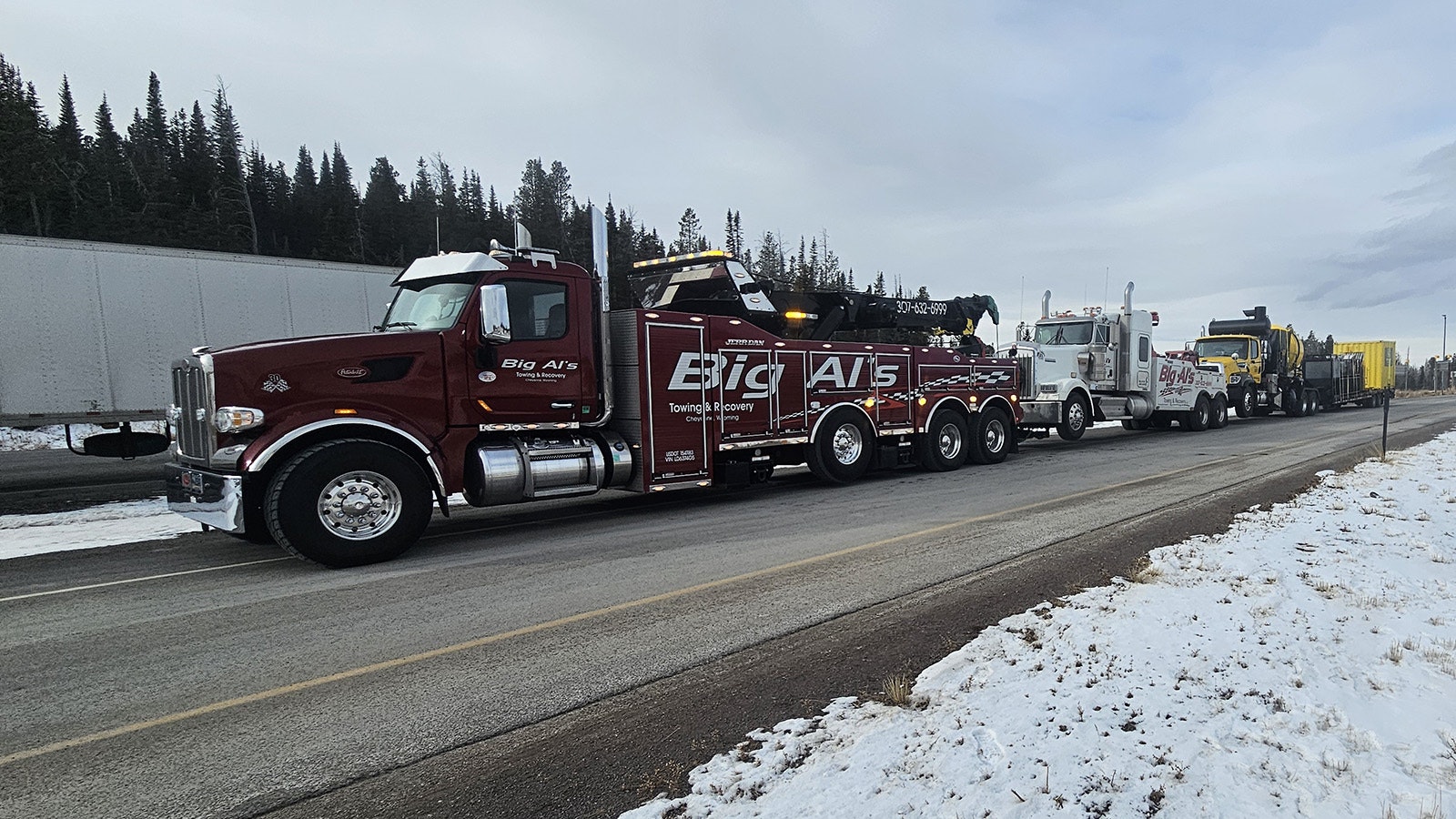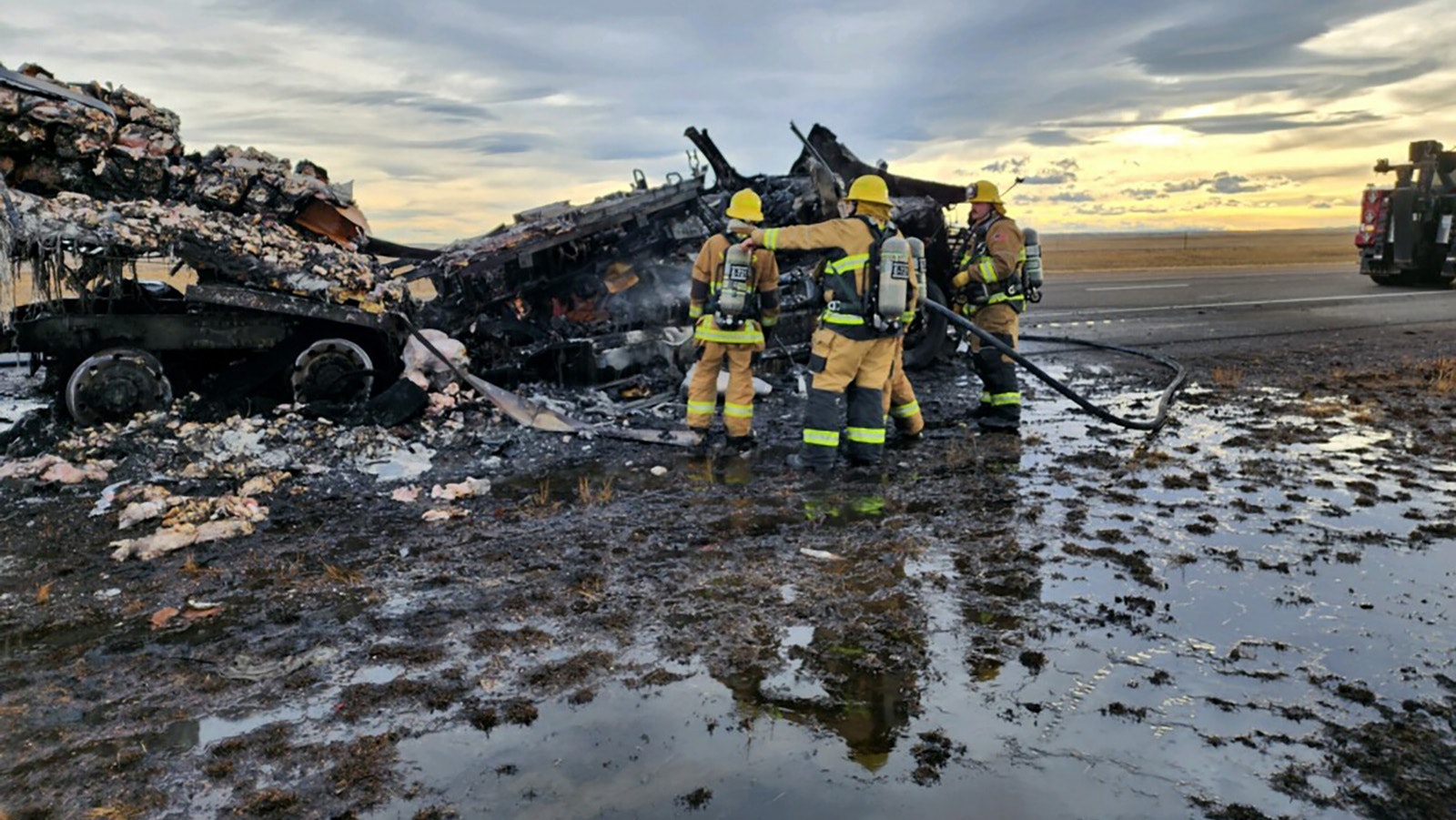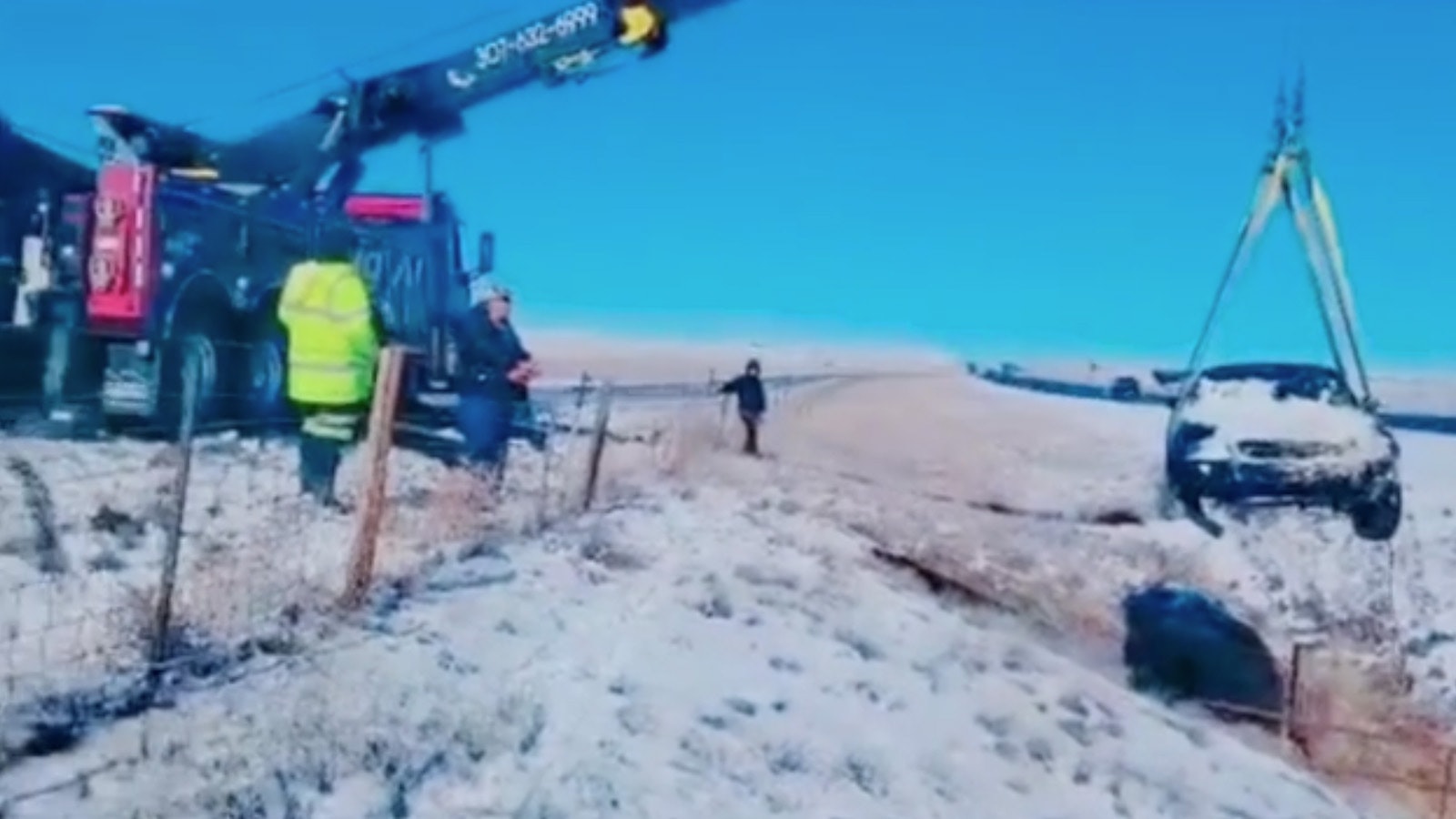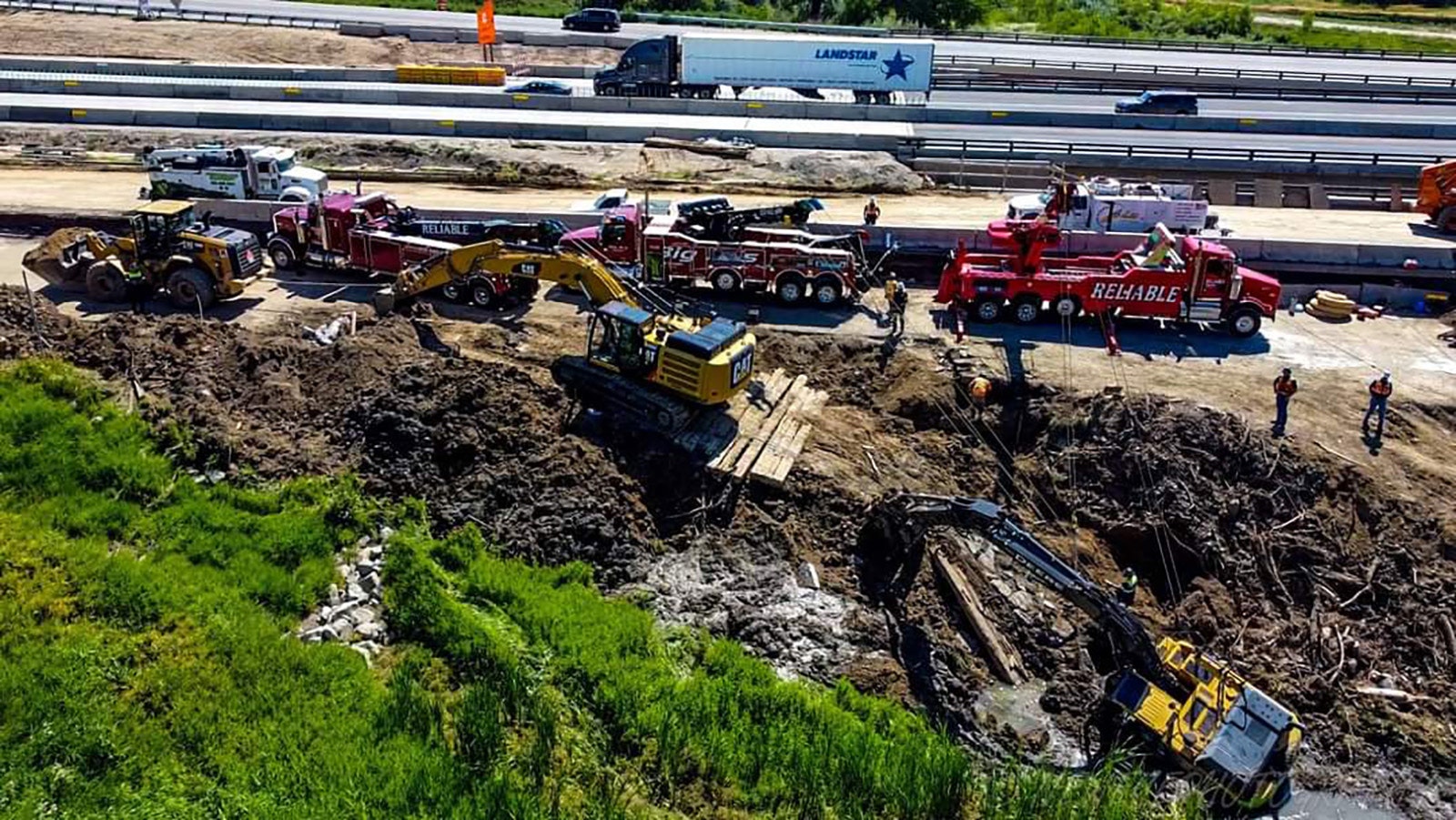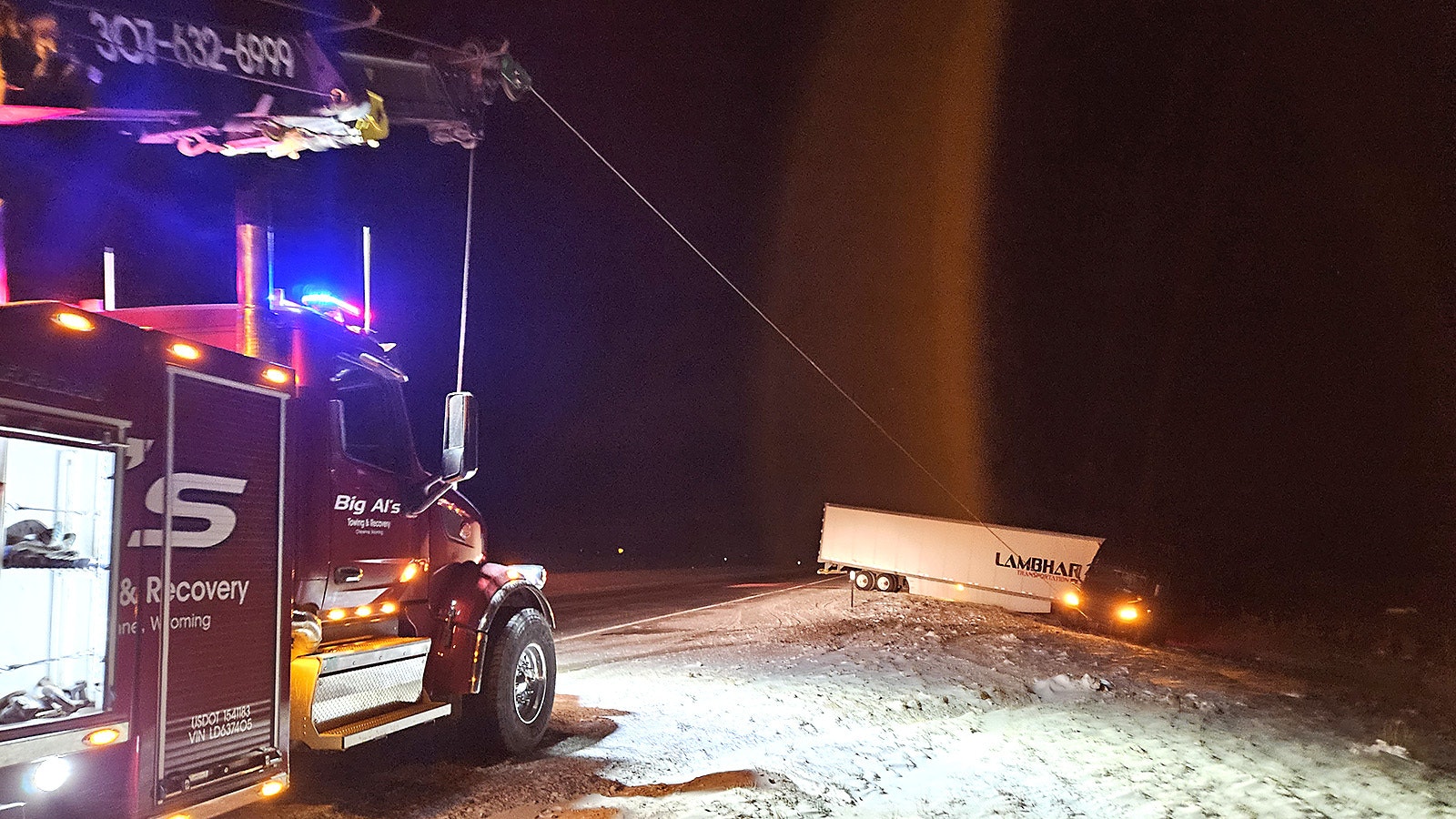When snow is coming down fast and hard and the rest of the world is staying home, that’s when David Rose, owner of Big Al’s Towing & Recovery in Cheyenne, and his crew with tow trucks are headed out into a wide, windy and dangerous world.
“I was really scared for everybody on Sunday because it was so slick out,” Rose told Cowboy State Daily last week. “I mean, I think Cory said he saw five wrecks happen when he was heading out to that rollover in the new zone out here.”
The wrecks that invariably appear along their way are just one of many examples of all the things that can go drastically wrong for the Rocky Mountain region tow truck drivers who risk their lives helping rescue stranded motorists and righting fully loaded trucks after they have slid off the interstate and rolled down a steep embankment.
Fuel tanks catching fire, exploding sausages, spilled lumber trucks, cars driven off steep embankments by meth addicts — Rose has seen and done it all over a five-decade career at Big Al’s.
But soon he will add another first to the list. His tow truck company is set to be among four featured on The Weather Channel’s upcoming adventure docuseries “Rocky Mountain Wreckers,” which is expected to air sometime in the fall.
The show is going to be set on America’s deadliest highway loop. That loop includes Interstate 15, as well as the Wyoming section of I-80 that many truckers call The Gauntlet.
It’s so bad, truckers will go miles and miles out of their way to avoid the stretch of highway if they can.
The Guantlet drops 1,400 feet in elevation in just 9 miles at one point near Laramie that drivers refer to as The Summit. It’s a steep grade that can be surprising to drivers, and it has claimed many lives.
A Motorcycle Under A Bus? No Problem
Big Al’s in Cheyenne has been awarded the American Towman’s Ace Award five times or so, Rose told Cowboy State Daily, which puts his shop among the top 1% in America.
“We take care of our customers,” Rose said. “And we get lots of good reviews.”
It also has one of the only large-scale rotator trucks in southeast Wyoming, which gives the crew a distinct advantage on righting toppled semis and fixing weird problems, like a motorcycle wedged underneath a bus during Cheyenne Frontier Days.
Scarlet, as the rotator is named, can rotate 360 degrees and has five winches on it.
“There’s one on the body, four on the boom,” Rose said. “And so, we can actually pull stuff up and catch them at the same time.”
That’s helpful for standing up a semi with as little damage to the cargo as possible. But it was also useful for delicately extricating that motorcycle out from under a bus.
They could lift up the bus while simultaneously pulling the motorcycle out — no harm, no foul to either vehicle.
So Wet The Snow Was Blue
The tow truck business is neither easy, nor inexpensive. That’s something Rose hopes the “Rocky Mountain Wreckers” docuseries will help illuminate.
“People don’t realize what we do or how difficult it can be,” Rose said. “I’ve got $2 million worth of equipment out there. Plus, there’s all the training that we do. The insurance on my fleet is $15,000 a month for about 20 trucks. And my fuel bill is just crazy. I think we’re at $20,000 a month.”
Hours also can be extremely long and challenging for the workers. It’s not uncommon to be working in conditions that are minus 20 and colder.
Rose himself recalls doing a 28-hour stint one Mother’s Day when a snowstorm blanketed southeast Wyoming with 15 inches of snow.
“Me and this rookie driver ran 68 calls, just the two of us,” Rose said. “I called everybody, but they’re like, ‘No, I’m out of town with my mom.’”
Rose couldn’t even get his daughter and son-in-law to come back.
“They were down in Fort Collins and I’m like, “Can you guys come back up here, we need a hand,’” Rose said. “And they were like, ‘No, for some reason the roads are closed.’ So, they couldn’t even get here.”
Rose’s rookie driver got stuck a few times, so Rose had to go get him out between working calls himself.
“I went through, like, four pairs of clothes,” Rose said. “Like coveralls, boots, everything. It was horrible. Heavy, wet snow. The snow was so wet it was blue, that’s how much moisture was in it.”
The next day was Rose’s birthday, so when everyone got back to the office, he told them he was done for the day.
“Just leave me alone,” he said. “Cancel my birthday, I’m done. They were like, ‘Can you do this one more call?’ And I’m like, ‘No man.’”
The experience wasn’t great for the rookie either, Rose added.
“Two months later, he quit,” he said. “He’s like, ‘No, that’s enough.’”
Flying Sausages Everywhere
One of the worst wrecks Rose remembers was a truck hauling Jimmy Dean sausages. The truck caught fire out by Little America in Cheyenne.
“The tires caught on fire, and tires burn hot,” Rose said. “They burnt up the front of the trailer and the truck burnt clear to the ground.”
The fire caused the truck’s fuel tanks to explode, sending pieces of sausage flying everywhere.
Rose’s employees couldn’t work in the ditch around the wreck, because not only had the fire department put down tons of water and foam to get the fire out, but it had rained as well.
“You’d step out there and your boot would just disappear,” Rose said. “It was quite the mess.”
The smoke was no picnic either.
“I mean, I had people out there who had to freaking get rid of their clothes and boots and stuff like that,” Rose said. “It was bad.”
Those kinds of challenging working conditions are one reason Rose has to pay his drivers well.
Salaries in the industry average around $40,000 a year, but Rose pays his guys more than that, particularly if they have experience. And he doesn’t mind if his drivers also pull in high-dollar tips, ranging from $300 to $400 a week on top of that salary.
“If they’re getting tips, I know they’re doing a good job,” he said. “And if you don’t pay them well, there’s lots of jobs out there where you’re not risking your life. There’s lots of easier jobs.”
Rose also sends his guys to training every year. For one, they learn better, faster ways to work smarter, instead of harder.
They’re setting up extrications, using million-dollar equipment, and that has to happen in the least amount of time possible so that everyone gets home safe and sound.
The clock is always ticking, Rose said. Every second a road is blocked increases the likelihood of a secondary accident.
Renée Jean can be reached at renee@cowboystatedaily.com.

